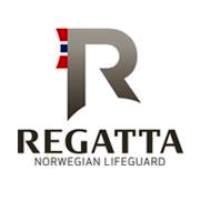MSC/Circ.922 du 4 June 1999
RECOMMENDATIONS ON PERFORMANCE STANDARDS AND TESTS
FOR THERMAL PROTECTIVE LIFEJACKETS (TP-LIFEJACKETS)
1 The Maritime Safety Committee, at its seventy-first session (19 to 28 May 1999), responding to the interests expressed by several delegations for the Organization to develop performance standards for thermal protective lifejackets, approved Recommendations on performance standards and tests for thermal protective lifejackets (TP-lifejackets), as set out in the annex.
2 TP-lifejackets may be used in addition to, or in replacement of, on a one-for-one basis, SOLAS-approved lifejackets.
3 Member Governments are invited to bring the annexed Recommendations to the attention of shipping companies, shipowners, ship operators and all other parties concerned.
ANNEX
1 GENERAL
1.1 Lifejackets provide buoyancy and prevent a person from drowning. They also support an unconscious person in a position where the mouth and nose are clear of the water. However, lifejackets virtually offer no thermal protection
1.2 Immersion suits offer buoyancy and thermal protection. They are intended for use by trained personnel and are less suitable for use by untrained passengers.
1.3 These recommendations on performance standards and tests refer to thermal protective lifejackets (TP-lifejackets) which should considerably prolong the time before unconsciousness in cold water and allow the wearers full mobility. They should also significantly reduce the initial cold shock for a person falling into cold water.
2 PERFORMANCE STANDARDS
A TP-lifejacket should, in addition to meeting the requirements contained in section 2.2 of the International Life-Saving Appliance (LSA) Code:
.1 be constructed to minimize the fall of the wearer’s body core temperature;
.2 permit the person wearing it to:
.1 climb up and down a vertical ladder at least 5 m in length; and
.2 perform normal activities associated with abandonment; and
.3 be so constructed that, when worn in conjunction with warm clothing, the TP-lifejacket continues to provide sufficient thermal protection to ensure, at least, that, when it is worn for a period of 2h in calm circulating water at a temperature of 10°C, the wearer’s body core temperature does not fall more than 2°C.
3 PERFORMANCE TESTS
3.1 A TP-lifejacket should be subjected to the prototype and production tests applicable to lifejackets listed in Part 1, section 2 and Part 2, section 2 of the annex to the Revised Recommendation on testing of life-saving appliances (resolution MSC.81(70)), as it may be amended.
3.2 A TP-lifejacket should also be subjected to the following tests which should be carried out with test subjects as defined in paragraph 3.1.1 of the annex to resolution MSC.81(70), as it may be amended:
.1 Tests of physical characteristics:
.1 donning test (paragraph 3.1.4 of the Annex to resolution MSC.81(70), as it may be amended);
.2 ergonomic test (paragraph 3.1.5 of the Annex to resolution MSC.81(70), as it may be amended); and
.3 field of vision test (paragraph 3.1.6 of the Annex to resolution MSC.81(70), as it may be amended).
.2 Tests of thermal protective characteristics:
.1 general (paragraphs 3.2.1, 3.2.2, 3.2.3 and 3.2.4 of the Annex to resolution MSC.81(70), as it may be amended);
.2 the test subjects should wear a standard range of clothing consisting of:
.1 underwear (short sleeved, short legged);
.2 shirt (long sleeved);
.3 trousers (not woollen);
.4 woollen socks; and
.5 two woollen pullovers; and
.3 the test subjects should be placed in calm circulating water at a temperature of 10ºC and stay there for a minimum period of 2 h.
The test subjects’ body core temperature should not fall more than 2ºC below the normal level of the test subjects’ temperature.







